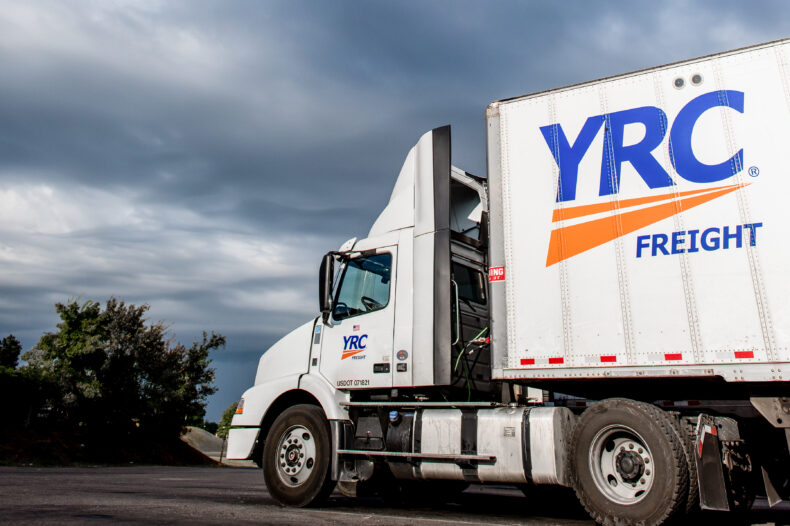It’s not uncommon for small and medium businesses to stick with it through thick and thin when they find a service that suits their needs. There simply isn’t the time or desire to seek alternatives due to the financial and operational costs.
That’s precisely what happened to thousands, perhaps millions, of SMBs who watched less-than-truckload (LTL) carrier YRC Freight (NASDAQ: YELL), a subsidiary of Yellow, fall into bankruptcy and cease operations this week.
YRC Freight was their low-rate freight provider. In the commoditized game of LTL freight, price usually wins. It helps to have trucks and distribution centers everywhere. Mellow Yellow.
But no longer.
Now SMBs are scrambling to find an alternative. Could they have seen YRC Freight filing for bankruptcy coming? Sure. But when you’re handling your business, your LTL carrier, which makes $6 Billion a year in profit, is simply too big to fail, right? Think again. (Banks, we hope you’re reading this).
So, where does all this leave the small business shipper and potential lessons from Yellow’s demise?
Three lessons for SMB’s to mitigate freight risk in the future:
1. Avoid All Eggs in One Basket
Trying to juggle multiple LTL carriers can be a very time-consuming job. Most SMBs, especially those on the smaller side, don’t have the luxury of a dedicated freight manager. Again, LTL is a commoditized business, so you go with price or coverage area and call it good.
One wise alternative is to rely on the uShip LTL marketplace. It works similarly to Hotwire or Expedia for airline tickets — but it’s for LTL freight. Once you input your shipment details, rates from as many as 20, well, now 19 (sorry YRC) appear instantly. Book on the spot and move on with your day.
Between 1500-2000 businesses join uShip monthly to tackle their LTL freight.
2. Get a Price Perspective
On the heels of YRC Freight filing for bankruptcy, LTL rates are already set to rise. The uShip LTL marketplace lets you play the ponies with complete transparency, including the spot rate, service history, and other key factors that put a rate into perspective.
And here’s the reality on shipping rates that SMBs can get from LTL carriers: they simply won’t take your call. You don’t have the volumes. You may have fostered a great rapport with your YRC Freight rep — let’s call him Carl — but the truth is, Carl won’t be picking up the phone any longer. On uShip, you can get contracted blanket rates through national and regional carriers. No phone calls. No haggling. In other words, you get big-boy LTL rates without big-boy volumes.
One customer who shipped agricultural supplies through the uShip LTL marketplace cut their booking time by HALF by taking advantage of the all-in-one-place approach. Before uShip, they had multiple browser tabs open, each containing an LTL carrier’s site, their shipment details, and a shipping rate. It became less a game of cost savings and more a game of Google Chrome calisthenics.
And one final point on price: Dimensional pricing will change your life. Historically, Freight Class has been the standard for establishing freight rates. It was written about the same time as the King James Bible. Some things have changed since that era. And most people can figure out the height, length, and depth of their palletized goods. That’s how freight rolls on uShip.
3. Cover Your Assessorials (CYA)
LTL carriers ‘ assessorial fees are the bane of every business shipper’s existence. Those extra nickel and dime charges are on top of the base freight charge.
As an SMB who may not know the ins and outs of the LTL game, especially when dealing with new carriers, these can be significant, adding as much $1000 to your freight bill.
On uShip, our in-house LTL operations team is an extension of your business. We audit every freight bill that goes through our marketplace at no cost to you to ensure the fare is fair. Getting charged for unnecessary lift gate service? Are measurements a tad off? We’ll help fight the good fight on your behalf with the carrier itself.
For the process to work, you must be on the up and up when listing your goods. In other words, indicate a pickup in a residential area accurately rather than selecting a business dock. This inaccuracy could cost you handsomely for LTL carriers, who loathe residential pickups, and there may be little recourse.
The Takeaway
Our hearts certainly go out to all those workers at Yellow Freight who lost their jobs in the company’s debacle. Each was simply doing their job, and now that role is gone. YRC Freight carriers can find loads on uShip to help drive their income during this tough time.
But you have a business to run, and when that business requires the shipment of goods, you need to adapt.
With these lessons in mind, you can protect your business, bottom line, and customer reputation.
—
Sam Ely is VP of Freight Operations at uShip. He joined uShip in 2013 and leads the team responsible for the LTL marketplace and knows a thing or two about how LTL carriers operate.



